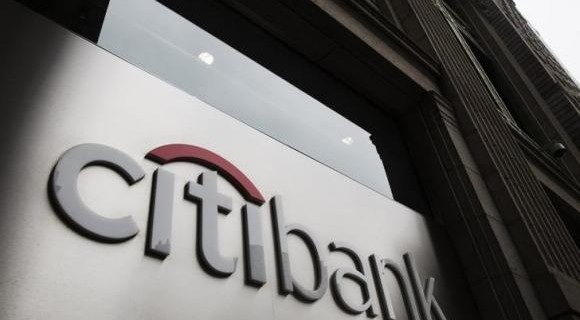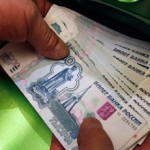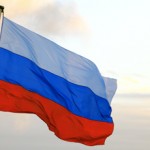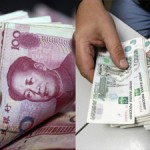Russia Deposit Fight Sees Foreign Banks Seeking New Clients

Oksana Semenikhina, a customer of Citigroup Inc.’s Russian unit for the past decade, got an offer from the lender this year that she couldn’t pass up.
“They offered to open a ruble term deposit for me at 9 percent interest, through a mobile application,” said the 31-year-old marketing manager in Moscow. “Previously, the rate was never higher than 5 percent, and you had to go to the office to do a lot of paperwork.”
ZAO Citibank’s proposal is part of a wider effort by international lenders in Russia to compete with local rivals for consumer deposits after sanctions tied to Ukraine sent the ruble plunging last year, spurring rate increases that drove up financing costs for banks and their clients.
The units of foreign lenders already lost some large corporate clients as sanctioned state banks, cut off from U.S. and European capital markets, wooed exporters with higher rates for deposits in euros and dollars, three people with knowledge of the situation said in November. That’s made consumer deposits more important.
“Before the crisis, retail ruble deposit rates at the most conservative units of foreign banks were lower than the state banks were offering,” said Maxim Osadchiy, an analyst at Bank BKF Ltd. in Moscow. “Now they are matching the level, or even offering higher rates.”
Sberbank, Russia’s largest lender, offered rates as high as 11.25 percent last month on ruble term deposits, up from 7.25 percent a year earlier, according to data from Frank Research Group. Citibank’s rates rose as high as 13 percent last month, up from 6.5 percent a year before.
Double-Digit Rates
The Russian subsidiary of Milan-based UniCredit SpA, the country’s largest foreign-owned bank, is offering as much as 14 percent annually on ruble deposits, while Rosbank, owned by France’s Societe Generale SA, is paying up to 16.3 percent for three-year deposits, according to their websites.
Lenders will probably have to pay double-digit rates on deposits throughout 2015, even as the central bank lowers borrowing costs from an 11-year high, said Yury Tulinov, head of research at Rosbank. The central bank raised the key rate six times to 17 percent last year, and has since lowered it to 14 percent.
Units of Citigroup, Raiffeisen Bank International AG and UniCredit, which typically catered to more affluent clients, are trying to broaden their deposit bases, said Yury Gribanov, the founder of Frank Research Group in Moscow.
“The banks have turned to funding from the retail market and offer higher deposit rates, as they can’t always rely on their parents for cash,” said Gribanov.
‘Strengthening Relations’
The ruble’s collapse last year prompted a bout of capital flight, while more Russians are being forced to tap their savings to make ends meet as sanctions and falling oil prices hurt the economy. An increasing portion of consumer loans are going bad, while the value of new loans fell in the first two months of the year.
Russia’s central bank predicted last week that gross domestic product may shrink as much as 4 percent this year.
Retail deposits dropped 2.5 percent last year, excluding the effect of the currency devaluation, and fell further in January. The direction changed last month when deposits increased 2 percent, helped by “the relative stability of the ruble and high interest rates on ruble deposits,” analysts at Sberbank CIB wrote on March 17.
Citibank generated 40 percent to 45 percent of its profit from consumer banking last year, making the business “crucially important,” said Sergey Korotkov, a member of the Russian unit’s management board in Moscow.
Citibank offered to compensate customers for foreign-exchange losses during the New Year and Christmas holidays, which stretched over the first 11 days of 2015. “By doing this, we are strengthening our relations with clients,” Korotkov said in an emailed response to questions.
Not Leaving
International lenders hold about 8.5 percent of Russia’s banking assets, according to central bank data. The largest are the units of UniCredit, Societe Generale, Austria’s Raiffeisen, Sweden’s Nordea AB and New York-based Citigroup.
“Clients’ accounts and deposits are the key source for our funding,” said Andrey Stepanenko, deputy chairman of the management board at ZAO Raiffeisen.
Raiffeisen’s Russian unit earned 342 million euros in 2014 even as the parent posted a loss. The lender is reducing exposure to the country and closing some branches in the east.
Better Results
UniCredit’s chief executive officer, Federico Ghizzoni, said last week that results in Russia in the first two months of this year were better than the bank had budgeted.
Last month, he estimated that sanctions over the Ukraine conflict will reduce revenue by as much as 60 million euros this year, though the Russia business will remain profitable.
“Russia remains one of the key markets for UniCredit,” Svetlana Pirozhkova, the director of the department of retail segments and marketing at the UniCredit unit, said by email. “The competition of the deposit market is traditionally high.”
Difficulties aside, there’s no reason for international banks to quit Russia, said Sergey Voronenko, an analyst at Standard & Poor’s in Moscow. They are profitable, and have to hold on until the economic turmoil subsides, he said.
Source: Bloomberg – Russia Deposit Fight Sees Foreign Banks Seeking New Clients





























